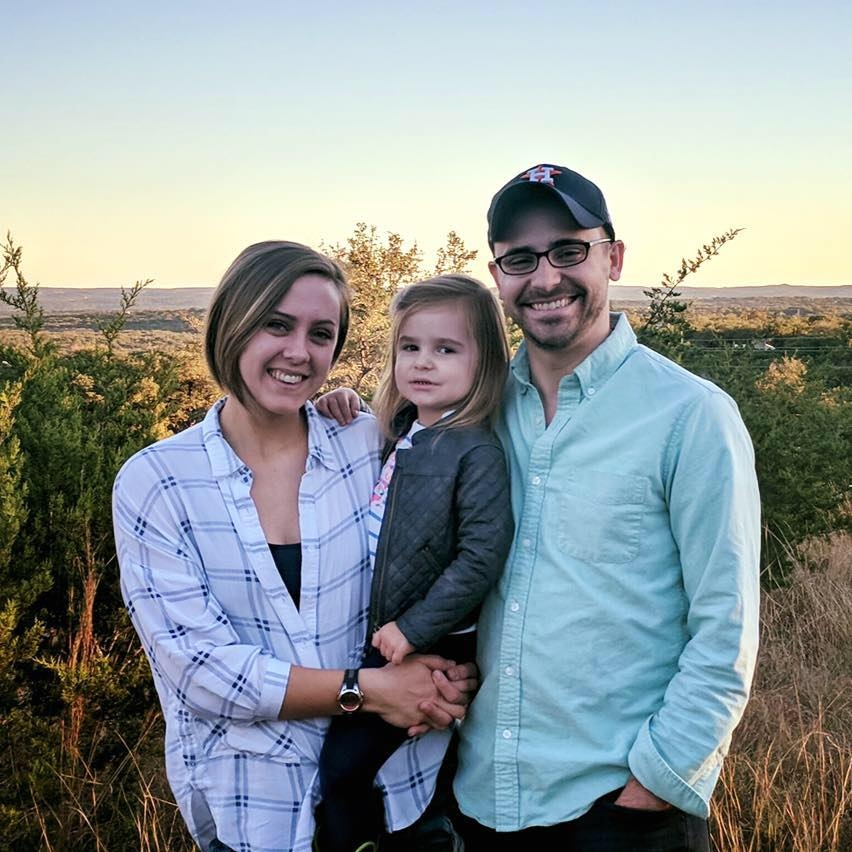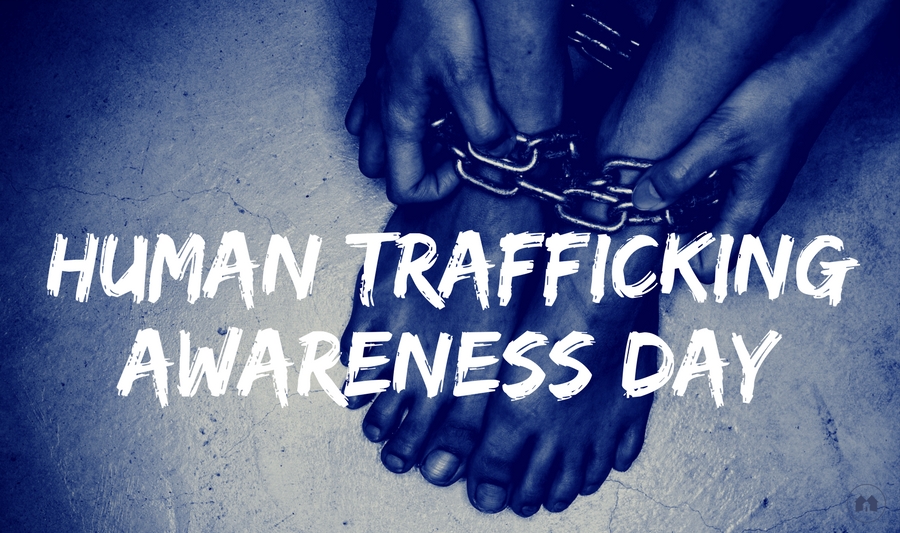Today, January 11th, is National Human Trafficking Awareness Day.
Although you may feel the topic isn’t terribly relevant to your family, changes in society (such as the rise of social media) make the danger greater than you might ever imagine. Children, including those from “ordinary” families, are at risk of becoming victims.
As our guest writer explains it, “Everyone is vulnerable in some way, and the wrong person, saying the right thing, on a bad day,
can lead down a very dark road.”
While we know the topic can make us uncomfortable, we also hope this information will be educational and thought-provoking.
“Let it go.” If you mistakenly say these words in my house, your odds of being loudly serenaded by my toddler increase significantly. We watched Disney’s Frozen roughly twenty-four times but she only knows the words, “Let it go. Let it GO!” The decibel problem aside, her song always serves to remind me of human trafficking in the United States.
That’s an obvious connection, right? Frozen spoilers ahead.
When Frozen first premiered, a lot of parents talked about the interesting family dynamics and the clever humor. A few mentioned their surprise in the character of Hans. For the vast majority of the movie, Hans seems like he will be the love interest for Anna: she sings about loneliness and searching for love, they have the meet cute, develop some chemistry, and very quickly become engaged. Hans even defends Anna and her family, holding down the fort while Anna searches for her sister. Ultimately, Hans reveals he exploited Anna’s vulnerabilities for access to the throne of Arendelle.
Around the eighth time we saw the movie, something clicked, and I realized this eerie pattern provides a helpful parallel for understanding how human trafficking can happen in America.
Human trafficking, possibly better understood as modern slavery or the exploitation of vulnerability, manifests in the United States primarily as labor trafficking and commercial sexual exploitation. The scope of the issue in America is difficult to quantify, but groups like the Polaris Project estimate the number of people enslaved here reaches the hundreds of thousands, many of which are children. Trafficking of persons yields high profits, $150 billion/year globally, and is perceived to be a low risk endeavor.
The National Center for Missing and Exploited Children estimates 1 in 6 children who were reported as run-aways in 2016 were likely sex-trafficking victims. 86% of these likely trafficking victims were in foster care or in the care of social services when they ran away. All of those statistics illustrate the phrase “exploitation of vulnerability” discussed above. There is a market for cheap labor, for sex, even from children. Children are innately vulnerable to exploitation, but children who are in the foster system, have exposure to the juvenile justice system, or experience abuse are at the highest risk for trafficking. These high risk sub-populations explain the majority of children and adults being trafficked, but as our Frozen metaphor above demonstrates, this will not apply to 100% of trafficking victims. Anna was not trafficked in the movie, of course, but Hans did take advantage of her insecurities. If Hans had been a trafficker instead of a prince seeking a new crown, the story could have gone very differently.
Children are innately vulnerable to exploitation, but children who are in the foster system, have exposure to the juvenile justice system, or experience abuse are at the highest risk for trafficking. #HumanTraffickingAwarenessDay Click To TweetTraffickers and recruiters often look to children and teens’ social media accounts to identify how they might be vulnerable for exploitation. High risk factors like abuse make for very appealing targets, but traffickers might also pick out a potential victim if they exhibit vulnerabilities like low self-esteem, learning delays, unstable home life, or poverty. Social media then makes it very easy for a trafficker to learn about their target and connect with them. Traffickers and recruiters will sometimes spend years earning the trust of a child and grooming them before they ever ask them to take part in trafficking activities. This process of identifying, grooming a child and then very gradually introducing them to the commercial sex trade helps explain how anyone could become a victim. Everyone is vulnerable in some way, and the wrong person, saying the right thing, on a bad day, can lead down a very dark road. While that element of universal vulnerability is alarming, even basic awareness of this process helps to safeguard our kiddos from potential exploitation.
Everyone is vulnerable in some way, and the wrong person, saying the right thing, on a bad day, can lead down a very dark road. #HumanTraffickingAwarenessDay Click To TweetParents make the job of potential traffickers much more difficult by simply being informed about issues like human trafficking, and by making their homes an environment in which their kids can ask questions about these kinds of issues. This will probably include occasionally broaching the subjects of sex, friends, relationships, and social media with kids and teens. These conversations can seem daunting, so groups like the National Center for Missing and Exploited Children set up a website with information for parents, teachers, law enforcement, and a section for kids themselves. If you need help navigating the perpetually shifting waters of social media, sites like iParent.tv walk parents through the pros and cons of various apps, websites, and devices.
Organizations around the country are actively combating human trafficking and hope to eradicate the exploitation of vulnerability. If you are seeking a more active role in this fight, see the below list of possible ways to connect:
- Shared Hope International works to prevent trafficking, assist survivors, and bring justice through legislative and policy solutions. They also provide annual report cards to grade each state on how they address human trafficking. Look up your state here
- Traffick911 combats Domestic Minor Sex Trafficking (or the sale of American children for sex). This organization seeks to prevent trafficking, works with law enforcement to rescue those involved, and collaborates with organizations and agencies to provide restorative services to survivors.
- Traffick911 also created a wallet-size print out of potential trafficking signs and tips for what to do if you suspect someone is being trafficked. You can always call 911 and/or the human trafficking hotline: 888-3737-888
- If you want to volunteer with kids who are at a high risk for trafficking, consider your local schools, juvenile detention centers, or becoming a CASA volunteer to a child in the social services system.
While this information is far from complete, being aware of your own vulnerabilities, and teaching our kids to do the same, takes a huge step in preventing trafficking. If you need more information, any of the organizations above list resources for parents, educators, and others. For every Hans in the world, we need an Elsa, informed and fighting for her family.

Tori Macfarlan received a degree in Christian Studies from Dallas Baptist University where she first began volunteering with Traffick911. She continues to work with Traffick911 by speaking to churches, organizations, and girls in juvenile detention centers, educating high-risk youth about the realities of human trafficking. Tori works for a member of the US House of Representatives in Houston, where she lives with her husband, daughter, and fur-child.

Great article! I homeschool and speak and have started two anti-trafficking organizations, and am behind what you say here 100%. Hans is the perfect example of grooming, a manipulation tactic that is often used by traffickers and pimps.
I have found it frustrating that people in the homeschool community think that their kids are immune to trafficking–which simply isn’t true. In fact, often the opposite happens, instead of equipping our kids and helping them not only know for themselves how to recognize dangers to them and their friends, as well as empowering them to feel like they care respond to social issues–we hide them. We want to protect their innocence. But by doing that we don’t empower them. I know of multiple girls in the good old wonderful suburbs, from good loving homes, who’ve been groomed, or runaway in situations that one would never expect–one of which was a homeschooler. In these cases, the parents were shocked to realize their child was actually at risk all along, but they didn’t help them. Thankfully, these girls ended up being recovered, or at least, not trafficked. But there are just as many who aren’t from similar backgrounds who I’ve known of from “good,””safe” social circles. This has bothered me so much I’ve begun writing a curriculum for homeschool parents to do with their elementary-aged kids.
Thank you for bringing attention though this article. I simply hope that people will see my comment and hear from someone who homeschools and works in this field, can give credence to what you said!